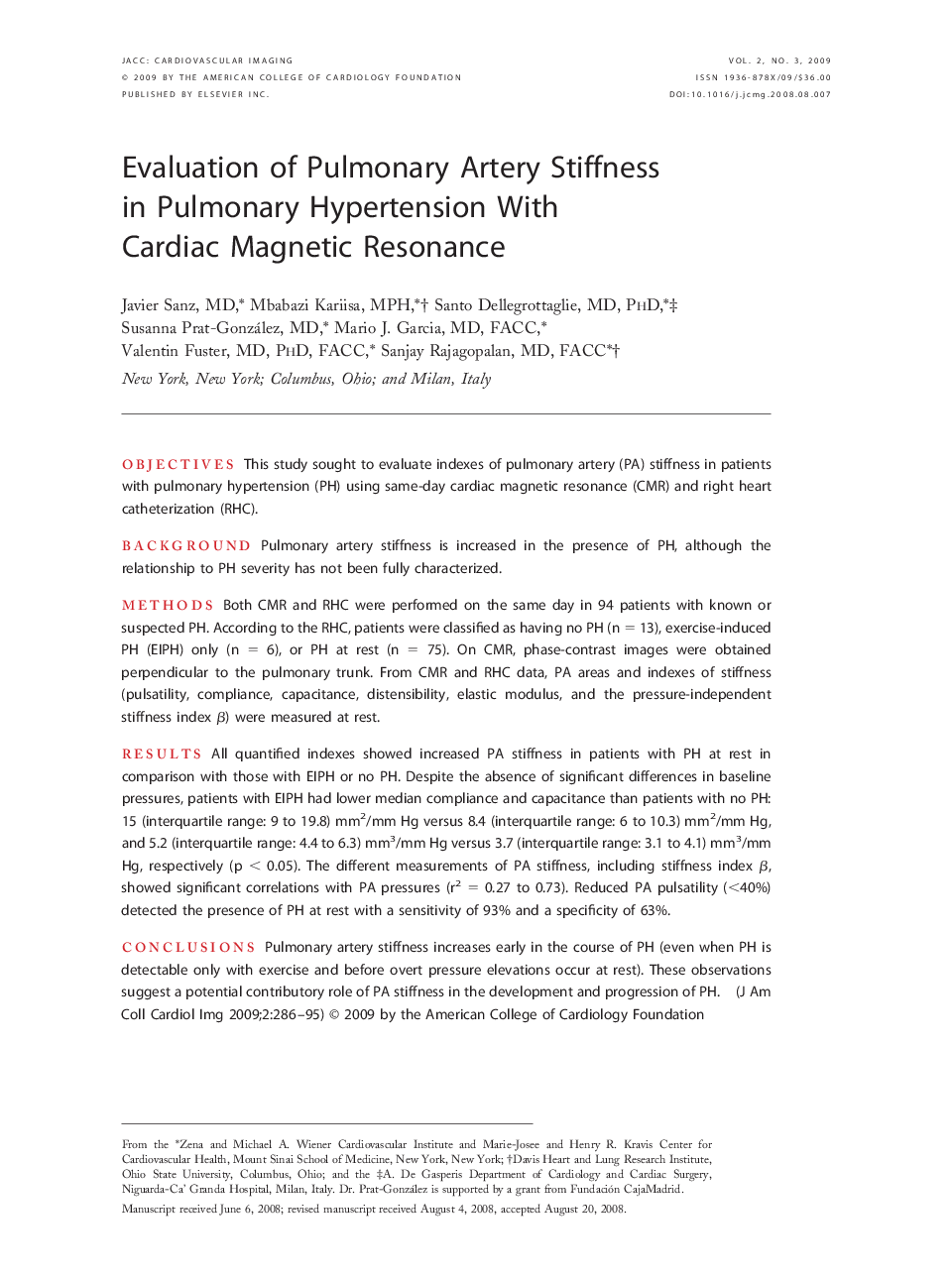| کد مقاله | کد نشریه | سال انتشار | مقاله انگلیسی | نسخه تمام متن |
|---|---|---|---|---|
| 2938941 | 1176964 | 2009 | 10 صفحه PDF | دانلود رایگان |

ObjectivesThis study sought to evaluate indexes of pulmonary artery (PA) stiffness in patients with pulmonary hypertension (PH) using same-day cardiac magnetic resonance (CMR) and right heart catheterization (RHC).BackgroundPulmonary artery stiffness is increased in the presence of PH, although the relationship to PH severity has not been fully characterized.MethodsBoth CMR and RHC were performed on the same day in 94 patients with known or suspected PH. According to the RHC, patients were classified as having no PH (n = 13), exercise-induced PH (EIPH) only (n = 6), or PH at rest (n = 75). On CMR, phase-contrast images were obtained perpendicular to the pulmonary trunk. From CMR and RHC data, PA areas and indexes of stiffness (pulsatility, compliance, capacitance, distensibility, elastic modulus, and the pressure-independent stiffness index β) were measured at rest.ResultsAll quantified indexes showed increased PA stiffness in patients with PH at rest in comparison with those with EIPH or no PH. Despite the absence of significant differences in baseline pressures, patients with EIPH had lower median compliance and capacitance than patients with no PH: 15 (interquartile range: 9 to 19.8) mm2/mm Hg versus 8.4 (interquartile range: 6 to 10.3) mm2/mm Hg, and 5.2 (interquartile range: 4.4 to 6.3) mm3/mm Hg versus 3.7 (interquartile range: 3.1 to 4.1) mm3/mm Hg, respectively (p < 0.05). The different measurements of PA stiffness, including stiffness index β, showed significant correlations with PA pressures (r2 = 0.27 to 0.73). Reduced PA pulsatility (<40%) detected the presence of PH at rest with a sensitivity of 93% and a specificity of 63%.ConclusionsPulmonary artery stiffness increases early in the course of PH (even when PH is detectable only with exercise and before overt pressure elevations occur at rest). These observations suggest a potential contributory role of PA stiffness in the development and progression of PH.
Journal: JACC: Cardiovascular Imaging - Volume 2, Issue 3, March 2009, Pages 286–295